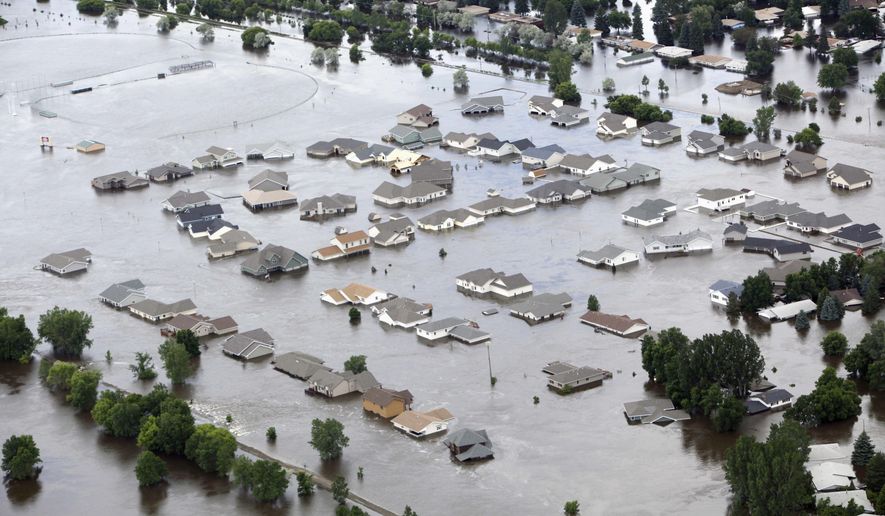For a burg that’s supposedly disappearing as a result of climate change, the town of Minot, North Dakota, is expanding rather briskly.
The city has seen its population increase by 21 percent since 2010, a factoid not included in last week’s Weather Channel report, titled “Vanishing America,” which singled out Minot as an example of a community “on the verge of disappearing due to global warming or extreme weather.”
Left flabbergasted were Minot residents like Jarrod Brown, who said on Facebook, “What in the world?? I’ve only seen the town grow since 2011. This is some garbage.”
Others accused the Weather Channel of “sensationalizing” the story and promoting “fake news.”
“[T]o say that the city is disappearing is completely inaccurate,” Minot City Council member Shaun Sipma told WDAY AM.
The report centered on the devastating 2011 Souris River flood that flowed over levees, damaged or destroyed 4,115 homes, and prompted the evacuation of 11,000 residents.
“Parts of Minot are already vanishing, boarded up by the changing oil industry and this new flood risk, a change in the weather forming a new future they did not expect,” said the Weather Channel’s Dave Malkoff during the segment.
He pointed to Federal Emergency Management Agency’s decision to develop new insurance-rate maps for the Mouse River Basin in response to the 2011 flood.
“These are huge flooding events, and they’ve gone through one, but now FEMA is changing the flooding maps so that it is no longer a low flood risk. It is one of the highest flood risks in America,” Mr. Malkoff said. “This is Minot, North Dakota, and if you travel there, you’ll see the remnants of what has happened after the flood. People are moving out.”
Insurance rates also jumped after the 1969 flood but were reduced in the 1990s as a result of changes in the river channel and improvements to dams and reservoirs, according to FEMA.
The Weather Channel defended its report in a statement: “The content and story line were based on factual information from FEMA, in-person interviews with Minot community members and a study from Housing and Urban Development.”
But irked Minot residents said the majority of those displaced by the flood returned and rebuilt. Since 2010, the town’s population has boomed from 40,888 to an estimated 49,450 in 2015, according to the U.S. Census Bureau.
Carolyn Moore, whose said her home was caught in the flooding, called the report “hogwash.”
“There have been some home buyouts for future flood protection, but those number in the dozens, not hundreds,” she said on Facebook. “This is not some situation creating a ’vanishing city’ — in fact, it highlighted what a strong people [those living in] the city of Minot are.”
Denizens of Minot, which has a history of catastrophic floods dating as far back as 1881, also argue that human-caused factors such as government dam mismanagement contributed to the June 2011 disaster, along with heavy winter snowfall and spring rain.
Mr. Sipma and council member Miranda Schuler, both of whom appeared in the segment, said they were under the impression that the story’s focus would be on the town’s resilience in coming back from the floods, not climate change.
Ms. Schuler said she “was expecting something completely different,” while Mr. Sipma said he was “disgusted.”
“It’s coming in and asking one thing and doing another, and it’s not just me, I think it’s the entire city,” Mr. Sipma said. “I’m quite disgusted, to be honest.”
The Weather Channel report, which first aired Wednesday, was billed as the first of a multipart series on how global warming is creating so-called climate refugees.
“People are moving away trying to escape what is happening in their hometowns,” said a video preview.
That’s not what’s happening in Minot, said WDAY AM host Rob Port.
“There’s a lot of good stories there,” said Mr. Port. “It seemed like what they wanted to focus on was climate change and this idea that climate change is erasing Minot, which is just not something when I watched it that fit the facts.”
• Valerie Richardson can be reached at vrichardson@washingtontimes.com.




Please read our comment policy before commenting.